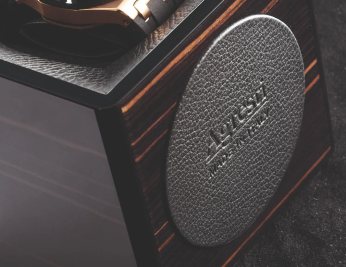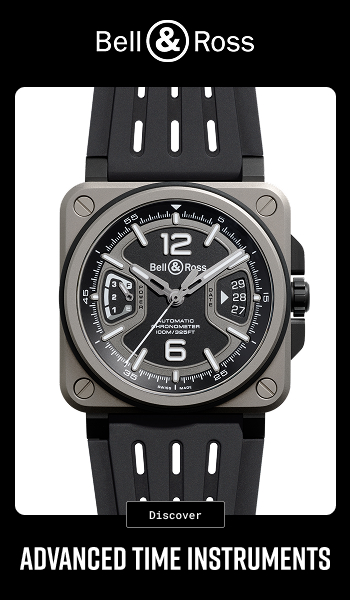007, the Olympics, George Clooney, Omega is that and much more, but the masterpiece par excellence, the one for which the maison is most recognized worldwide is and remains undoubtedly the Speedmaster.
It is a decidedly pronounced common thread that defines one of the luckiest and most magical triangles in watchmaking history. At the three vertices, needless to say, are the House of Biel, the U.S. space agency and everything related to space flight.
Business, commerce and fashion, although boring and repetitive aspects, also take over here, leaving as always to few the taste to go and discover the technical side and the stories behind the scenes.
One of the Speedy lines that arouses our curiosity the most is undoubtedly the Alaska Project.

The origins

As we mentioned earlier the connection linking the Speedmaster, and with it all its declinations over the years, to space flight is something beyond legend. And to think that it was almost a coincidence when Walter M. Shirra Jr, an American astronaut of Swiss descent, flew his personal Speedy aboard the Mercury-Atlas 8 mission in 1962 without Omega even being aware of it. Legend has it that the company’s executives became aware of the feat by seeing a photograph of the astronaut wearing the very reference CK 2998-4 in question…
The real watershed came in 1965 when Omega along with Rolex, Longines and Hamilton officially came to the starting tape for the race to space…

NASA’s test program, stricter than a Soviet ballet school, combined a variety of test types, including a mild (so to speak of course) sequence of 6 shocks of 40 G each. Tough stuff that the Biel House with the reference 105.003 passed brilliantly with extreme nonchalance.
But let’s go further by approaching the goal more specifically: the extreme conditions to which the spacecraft is subjected vary greatly indeed, suffice it to say that in the approximately 390,000 km that divide the Earth from the Moon, the module heats up to 200 °C at the side exposed to the sun while it cools down to -100 °C on the dark side. This is a difference hardly bearable by the exposed materials, surmountable only by the ingenuity of NASA engineers who put in place the “rotisserie” technique, navigation that involves the continuous rotation of the spacecraft along the axis defined by the flight path, thus maintaining an even distribution over the entire surface of the spacecraft… “perfect cooking.”

Innovation for innovation’s sake at Omega they certainly could not sit idly by. So it was that inside the Biel laboratories they set up one of the strangest and most successful joint ventures in history, consisting of master watchmakers and materials engineers all united by a single goal, to develop a space watch capable of dealing with all the extreme conditions that an environment such as the one described above can present.
The project took the name “Alaska Project” a term that purposely, because of the secrecy of the protocol, was not to recall Space, NASA and lunar modules in any way…
Alaska I

Although it shared the caliber, the historic 861, the three chrono counters, the baton hands, and in general the overall dial graphics, the very first prototype of the project, named Alaska I reference 5-003, we cannot call it a true Speedmaster. The timepiece’s coussin case is made of titanium, a material that is ultra-resistant to temperature changes and weighs 40 percent less than steel. The diameter of the dial, to increase visibility, increases from 42 to 44 mm.
The asymmetry of the case is more convex on the push-button side of the chrono gently offset by the convex silhouette of the left side. As you can see at the expense of the classic tachymeter bezel the time increment is entrusted to the inner flange. Very peculiar are the spheres of the small chrono counters that recall in all respects the shape of the space module, for the series “must not recall space…”

One of the most striking features of the timepiece, however, is its aluminum “cover,” let’s call it that, specifically used as the watch’s heat shield. Tests show that the watch alone, unprotected by the outer case, and exposed to sunlight goes from an initial temperature of 40 °C to a final temperature of 106 °C in 3 hours of exposure. If protected by the shield, on the other hand, under the same exposure conditions, the temperature rise is reduced by about 75%.

Considering that the dial could certainly not be covered by the frame, it was coated with white zinc oxide in such a way as to increase the heat dissipation effect. Operation of the chronograph is through 2 pushers located at 2 o’clock and 4 o’clock, while the pusher at 6 o’clock is used for opening the cover. The size of the buttons is very generous to facilitate the operation of astronauts with gloved hands.
Alaska II

1972 comes, the “moon landing” goal was brought home and put on the bulletin board. In those Biel, given the excellent results obtained, it is decided with the Speedmaster Alaska Project II to approach a more classic and traditional formulation of the Speedmaster.
The prototype reference is ST 145.022 and the heart of this timepiece is still powered by the caliber 861. The case of the Alaska II was stainless steel; the problem of reflections is mitigated by matting the dial through a microsphere sandblasting treatment. The shape of the spheres of the small chrono counters that recall the command space module remain unchanged. The color of the dial is still white to dissipate more heat. The cover that serves as a “heat shield” remains virtually unchanged.
Alaska III

Let’s take a leap back to 1978. The years that have passed since the last Alaska prototype are about 8, a very useful period for Omega’s engineers, focused especially on plugging the flaws that the last experimental model carried in its belly. The newborn, is in every way a very close relative to the classic Speedy, from which the engineers structured this new prototype.
In order to make it easier and more visible to read and measure the time, the Alaska III is equipped with a dial that is easier and more intuitive to read, applying a special anti-reflective treatment and giving more detail to the scale of the chrono counters. The caliber remains the tried-and-true 861 that has brought so much joy over the years.
Singular to note that the cases of this timepiece were made in the USA. In fact, the classic “Swiss Made” printing is missing inside the dial at 6 o’clock. The application of the Alaska III within NASA’s space projects was extensive throughout the 1980s, think that this timepiece had the honor of being the first to travel into space aboard the Space Shuttle.
Alaska IV

If until then, some more and some less, almost all Alaska prototypes were born and developed in the shadow of the classic Moonwatch, in 1978 came the real breakthrough. A totally innovative digital Speedmaster with an LCD screen. Although we are talking about an ultra-professional this timepiece manages to evoke like few others all the splendor of the quartz era, similar indeed very similar to what children all over the world wore on their wrists in the 1980s.
The stainless steel case features significantly smaller measurements, going from 42 to 36.5 mm in diameter. The 3 pushbuttons for operating the various functions are arranged canonically on the left side of the timepiece, with the difference being the addition of a button at 11 o’clock for time setting. The caliber 1621 is in every way identical to the more famous 1620 used for the house’s other quartz models, except for the dial’s retro-illuminating source, entrusted in this case to two tritium rods applied under the display at the expense of the classic bulb.
Even by today’s standards the accuracy of the movement is truly impressive ensuring a deviation of +/- 5″ per month. The Alaska IV like most of its prototype siblings never made it to commercial production however, the great work performed on this model was incredibly helpful in the creation of the first X-33 model.
2000s

It may have been that no one believed the watch could find its place in the market, it may have been because of the secrecy that shrouded the project, but the fact is that the Alaska Project and with it all the work done by Omega and NASA between the 1960s and 1970s never got beyond prototyping. The new millennium, however, is a new story. It is 2008 when the maison launches the Omega Speedmaster Professional “Alaska Project” line reference 311.32.42.30.04.001, with a limited run of 1970 pieces.

Considering its technical and aesthetic features, the model is very close to the progenitor Alaska II. The white dial with the typical small space-module chrono spheres remain in all their glory, and the 42mm case is every bit that of the Professional. The protective heat shield is made of red anodized aluminum, allowing the timepiece to withstand extreme temperatures ranging from -150 °C to 260 °C. In addition to the classic steel bracelet, the model comes out with a matching white Velcro strap, very similar to those on current MoonSwatches.
Final take
Although there are marked differences in concept between the two projects-the prototype production of the 1960s and 1970s is fueled solely by well-defined technical goals, while the 2008 production is purely commercial-the Alaska Project unquestionably represents further evidence of the supreme quality, endurance, and versatility that distinguish Omega watches, the brand that most probably understands, rides, and certainly satisfies the international market.
I’ll leave you with a little advice, if you own one of these wonderful items and don’t know when to wear the heat shield, I suggest you try it on the ski slopes–you’ll look great.
Do not miss any fascinating story about the world of watchmaking and follow us on Instagram.













